
Moby-Dick; or, The Whale is an 1851 novel by American writer Herman Melville. The book is the sailor Ishmael's narrative of the maniacal quest of Ahab, captain of the whaling ship Pequod, for vengeance against Moby Dick, the giant white sperm whale that bit off his leg on the ship's previous voyage. A contribution to the literature of the American Renaissance, Moby-Dick was published to mixed reviews, was a commercial failure, and was out of print at the time of the author's death in 1891. Its reputation as a Great American Novel was established only in the 20th century, after the 1919 centennial of its author's birth. William Faulkner said he wished he had written the book himself, and D. H. Lawrence called it "one of the strangest and most wonderful books in the world" and "the greatest book of the sea ever written". Its opening sentence, "Call me Ishmael", is among world literature's most famous.

New Bedford is a city in Bristol County, Massachusetts, United States. It is located on the Acushnet River in what is known as the South Coast region. Up through the 17th century, the area was the territory of the Wampanoag Native American people. English colonists bought the land on which New Bedford would later be built from the Wampanoag in 1652, and the original colonial settlement that would later become the city was founded by English Quakers in the late 17th century. The town of New Bedford itself was officially incorporated in 1787.
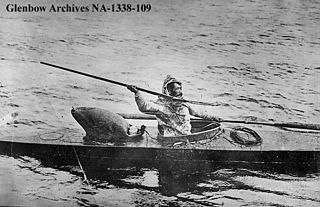
A harpoon is a long spear-like projectile used in fishing, whaling, sealing, and other hunting activities to shoot, kill, and capture large fish or marine mammals such as seals, sea cows and whales. It accomplishes its task by impaling the target animal and securing it with barb or toggling claws, allowing the fishermen or hunters to use an attached rope or chain to pull and retrieve the animal. A harpoon can also be used as a ranged weapon against other watercraft in naval warfare.
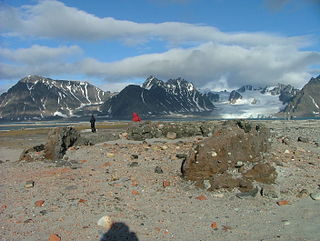
Smeerenburg was a whaling settlement on Amsterdam Island in northwest Svalbard. It was founded by the Danish and Dutch in 1619 as one of Europe's northernmost outposts. With the local bowhead whale population soon decimated and whaling developed into a pelagic industry, Smeerenburg was abandoned around 1660.
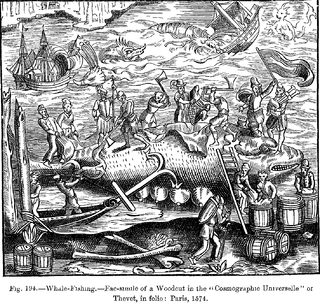
This article discusses the history of whaling from prehistoric times up to the commencement of the International Whaling Commission (IWC) moratorium on commercial whaling in 1986. Whaling has been an important subsistence and economic activity in multiple regions throughout human history. Commercial whaling dramatically reduced in importance during the 19th century due to the development of alternatives to whale oil for lighting, and the collapse in whale populations. Nevertheless, some nations continue to hunt whales even today.

Charles W. Morgan is an American whaling ship built in 1841 that was active during the 19th and early 20th centuries. Ships of this type were used to harvest the blubber of whales for whale oil which was commonly used in lamps. Charles W. Morgan has served as a museum ship since the 1940s and is now an exhibit at the Mystic Seaport museum in Mystic, Connecticut. She is the world's oldest surviving (non-wrecked) merchant vessel, the only surviving wooden whaling ship from the 19th century American merchant fleet, and second to USS Constitution, the oldest seaworthy vessel in the world. Charles W. Morgan was designated a National Historic Landmark in 1966.
Whale oil is oil obtained from the blubber of whales. Oil from the bowhead whale was sometimes known as train-oil, which comes from the Dutch word traan.

The toggling harpoon is an ancient weapon and tool used in whaling to impale a whale when thrown. Unlike earlier harpoon versions which had only one point, a toggling harpoon has a two-part point. One half of the point is firmly attached to the thrusting base, while the other half of the point is fitted over this first point like a cap and attached to the rest of the point with sinew or another string-like material. When the harpoon is thrust into an animal, the top half of the point detaches and twists horizontally into the animal under the skin, allowing hunters to haul the animal to ship or shore. This harpoon technology lodges the toggling head of the harpoon underneath both the animal's skin and blubber, and instead lodges the point in the muscle, which also prevents the harpoon slipping out.

A whaler or whaling ship is a specialized vessel, designed or adapted for whaling: the catching or processing of whales.

Flensing is the removing of the blubber or outer integument of whales, separating it from the animal's meat. Processing the blubber into whale oil was the key step that transformed a whale carcass into a stable, transportable commodity. It was an important part of the history of whaling. The whaling that still continues in the 21st century is both industrial and aboriginal. In aboriginal whaling the blubber is rarely rendered into oil, although it may be eaten as muktuk.
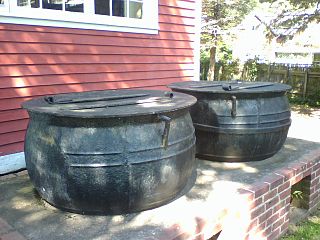
A try pot is a large pot used to remove and render the oil from blubber obtained from cetaceans and pinnipeds (seals), and also to extract oil from penguins. Once a suitable animal such as a whale had been caught and killed, the blubber was stripped from the carcass in a process known as flensing, cut into pieces, and melted in the try pots to extract the oil.

The New Bedford Historic District is a National Historic Landmark District in New Bedford, Massachusetts, United States, west of the community's waterfront. During the 19th century, when the city was the center of the American whaling industry, this was its downtown. After its decline in the early and mid-20th century, through the efforts of local activist groups the district has since been preserved and restored to appear much as it was during that period.

Commercial whaling in the United States dates to the 17th century in New England. The industry peaked in 1846–1852, and New Bedford, Massachusetts, sent out its last whaler, the John R. Mantra, in 1927. The Whaling industry was engaged with the production of three different raw materials: whale oil, spermaceti oil, and whalebone. Whale oil was the result of "trying-out" whale blubber by heating in water. It was a primary lubricant for machinery, whose expansion through the Industrial Revolution depended upon before the development of petroleum-based lubricants in the second half of the 19th century. Once the prized blubber and spermaceti had been extracted from the whale, the remaining majority of the carcass was discarded.

The Lagoda is a half-scale model of the whaling ship Lagoda, located at the New Bedford Whaling Museum. The original ship was built in 1826, converted to a whaling ship in 1841, and broken up in 1899. The model was commissioned in 1916 and is the world's largest whaling ship model.

Sperm whaling is the human practice of hunting sperm whales, the largest toothed whale and the deepest-diving marine mammal species, for the oil, meat and bone that can be extracted from the cetaceans' bodies.

Two Brothers was a Nantucket whaleship that sank on the night of February 11, 1823, off the French Frigate Shoals. The ship's captain was George Pollard, Jr., former captain of the famous whaleship Essex. The wreck was discovered in 2008 by a team of marine archaeologists working on an expedition for the National Oceanic and Atmospheric Administration in the Papahānaumokuākea Marine National Monument. She is thought to have been built in 1804 by Joseph Glidden in Hallowell, Maine.
The Basques were among the first people to catch whales commercially rather than purely for subsistence and dominated the trade for five centuries, spreading to the far corners of the North Atlantic and even reaching the South Atlantic. The French explorer Samuel de Champlain, when writing about Basque whaling in Terranova, described them as "the cleverest men at this fishing". By the early 17th century, other nations entered the trade in earnest, seeking the Basques as tutors, "for [they] were then the only people who understand whaling", lamented the English explorer Jonas Poole.
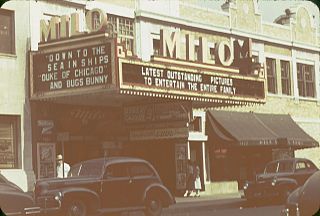
Down to the Sea in Ships is a 1949 American seafaring drama film directed by Henry Hathaway, starring Richard Widmark and Lionel Barrymore. The supporting cast includes Dean Stockwell, Cecil Kellaway, Gene Lockhart, and John McIntire. There is no connection between this picture and the silent film by the same name; the only thing they have in common is the title and the setting.

Davidson Whaling Station is a heritage-listed former whaling station at Edrom, Bega Valley Shire, New South Wales, Australia. It was built in 1896. The property is owned by the New South Wales Office of Environment and Heritage. It was added to the New South Wales State Heritage Register on 2 April 1999.

















